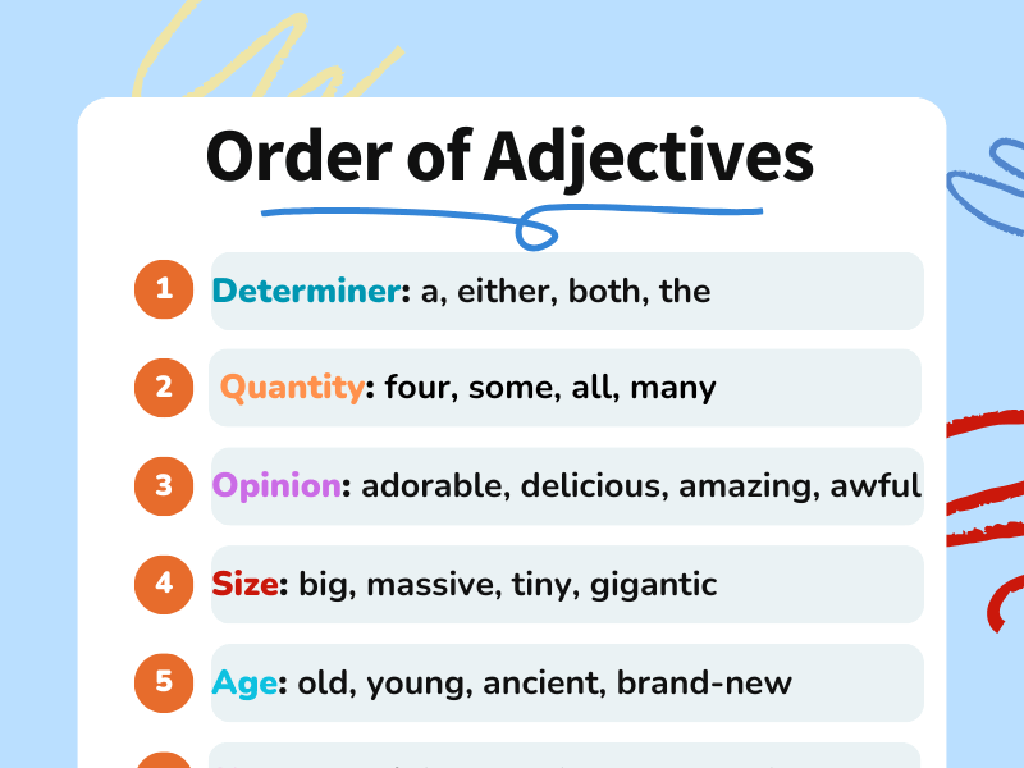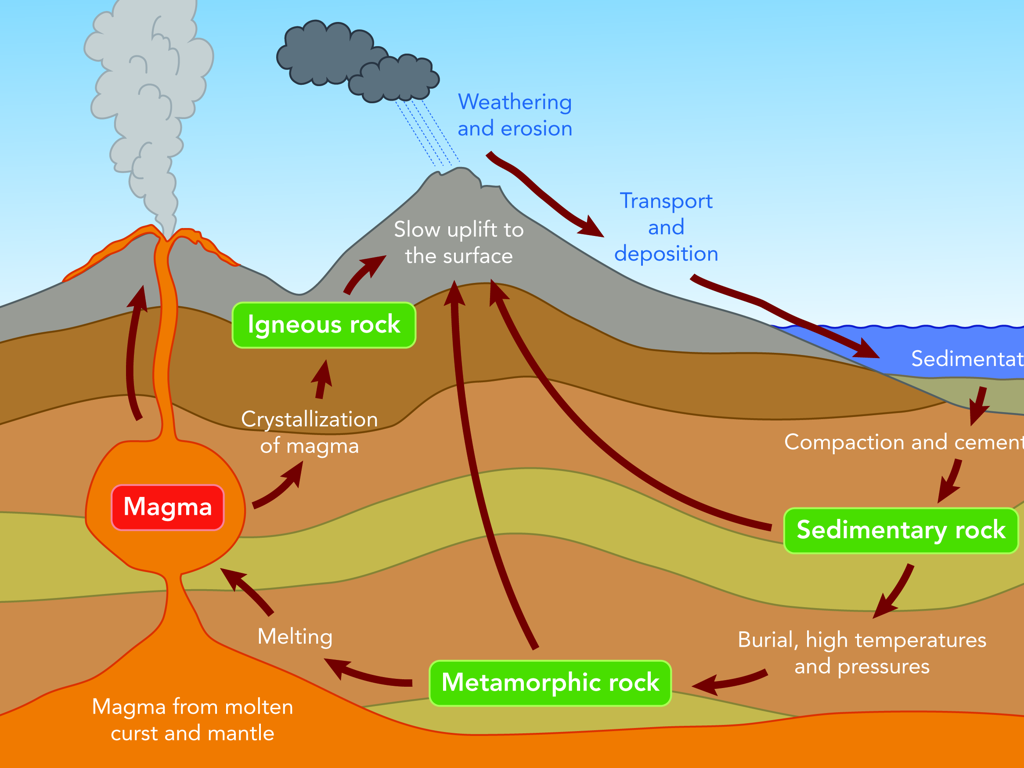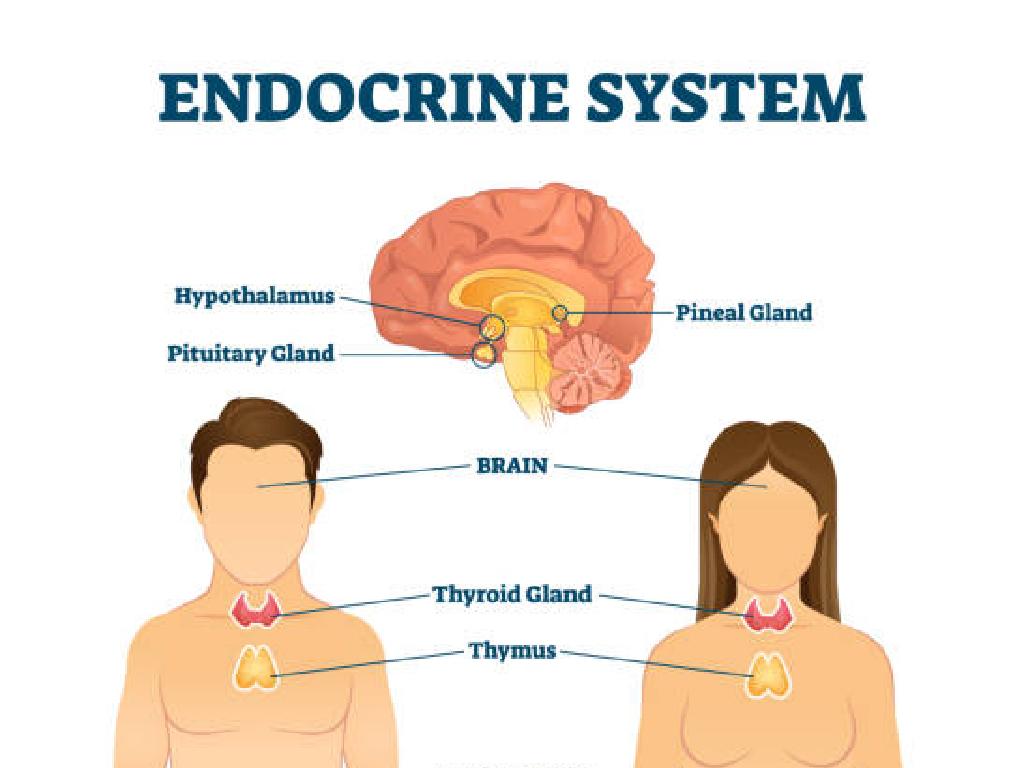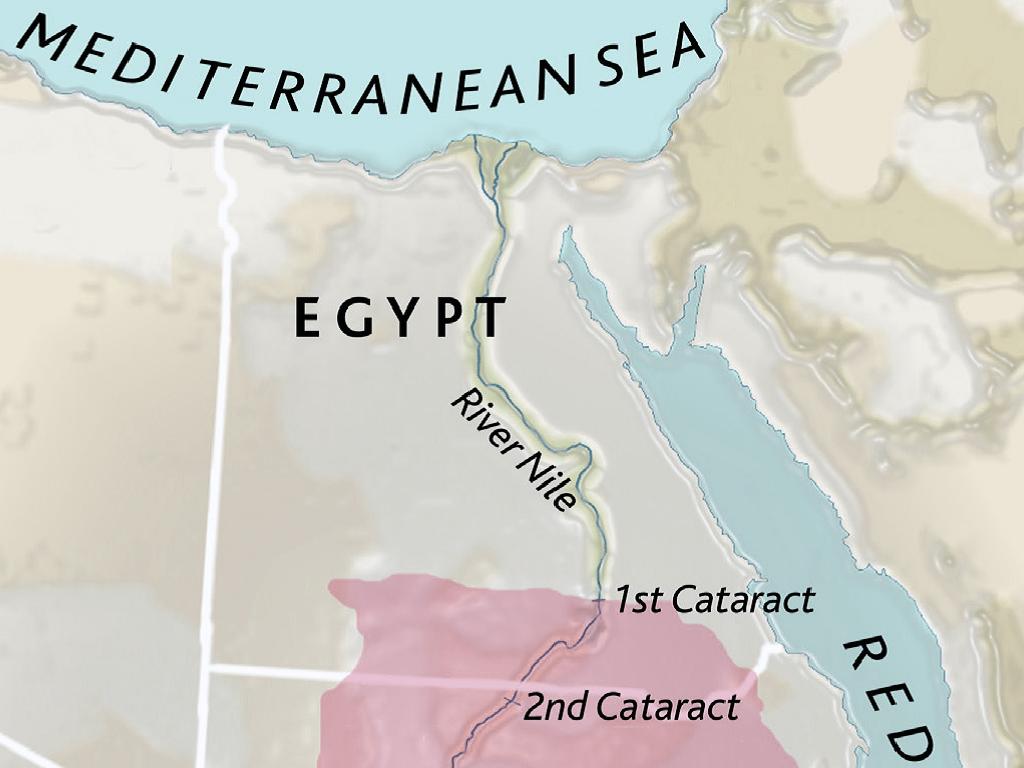Read About Animals
Subject: Language arts
Grade: Seventh grade
Topic: Analyzing Informational Texts
Please LOG IN to download the presentation. Access is available to registered users only.
View More Content
Analyzing Informational Texts: Animals
– Purpose of informational texts
– To educate and inform about animal behaviors, habitats, and conservation.
– Identifying key details
– Look for facts, statistics, and specific information about animals.
– Finding the main ideas
– Summarize what the text says about animals in your own words.
– Reading strategies for comprehension
– Use context, headings, and visual aids to enhance understanding.
|
This slide introduces students to the skills needed to analyze informational texts, with a focus on reading about animals. Emphasize the educational purpose of such texts, which is to provide factual information about the natural world. Teach students to look for specific details that support the main idea, and to summarize these ideas in their own words for better comprehension. Encourage the use of reading strategies such as paying attention to context clues, headings, and any accompanying visual aids like diagrams or photos to fully understand the text. This foundational knowledge will help students as they delve into more complex texts and topics.
Exploring Informational Texts About Animals
– Define informational text
– Factual writing that informs or instructs the reader.
– Contrast with fiction
– Informational texts are based on facts and real events, unlike fictional stories which are made up.
– Significance in education
– They build knowledge and analytical skills, essential for academic success.
– Focus on animal texts
– Examples include articles on animal behavior or habitats.
|
This slide introduces students to the concept of informational texts, focusing on non-fiction content that provides factual information about the world, such as texts about animals. Highlight the differences between informational texts and fiction, emphasizing that the former presents real-world facts and data. Discuss the role of informational texts in education, particularly in developing critical thinking and comprehension skills. Use examples related to animals to make the content relatable and to prepare students for analyzing such texts in class. Encourage students to think about how informational texts can be a valuable resource for learning about animal life and ecosystems.
Exploring Features of Informational Texts
– Understanding headings & subheadings
– They guide readers through the main topics and details.
– The role of captions, diagrams, & images
– Visual elements clarify and complement the text.
– Utilizing glossaries & indexes
– These tools help find information and define terms.
– Recognizing text structures
– Description, sequence, comparison, cause/effect, problem/solution patterns.
|
This slide aims to familiarize students with the common features of informational texts, particularly those about animals. Headings and subheadings organize content and make it easier to navigate. Captions, diagrams, and images provide visual explanations and enhance understanding. Glossaries and indexes are essential for looking up terms and finding information quickly. Text structures such as description, sequence, comparison, cause and effect, and problem and solution organize information in a logical way, aiding comprehension. Encourage students to identify these features in animal-related texts and discuss how they help in understanding the material.
Effective Reading Strategies: Animals
– Preview the text about animals
– Look at titles, headings, and images to guess what you will learn about animals.
– Make predictions on animal topics
– Based on the preview, predict what facts or stories the text will include.
– Ask questions at all reading stages
– What do you wonder about animals before you start? What questions arise as you read? What remains unclear after reading?
– Summarize the animal information
– Can you explain the main points about animals you read in your own words?
|
This slide introduces students to key reading strategies tailored to the topic of animals. Start by guiding students to preview the text, examining any headings, subheadings, images, or captions to get an idea of what the text will be about. Encourage them to make predictions about the content and to think about what they already know about animals. Emphasize the importance of asking questions before, during, and after reading to engage with the text and clarify understanding. Finally, teach them how to summarize the information they’ve read, focusing on main ideas and key details. These strategies will help students analyze informational texts more effectively and retain the knowledge they gain about animals.
Analyzing Text: Elephants
– Identify main ideas about elephants
– What is the central point the author makes about elephants?
– Find supporting details in the text
– Look for facts or examples that back up the main ideas
– Understand the author’s purpose
– Is the author informing, persuading, or entertaining readers about elephants?
– Analyze text features of the article
– Check titles, headings, images, and captions for additional information
|
This slide aims to guide students through the process of dissecting an informational text about elephants. Students should start by pinpointing the main ideas presented by the author, then search for supporting details that reinforce those ideas. Understanding the author’s purpose is crucial; it could be to inform the reader about elephant behavior, persuade them about conservation efforts, or entertain with stories about elephants. Additionally, students should be encouraged to analyze the text features such as titles, headings, images, and captions, as these elements can provide significant insights into the content and help in better understanding the text. The activity will enhance their critical reading skills and ability to analyze informational texts.
Group Reading Activity: Exploring Animal Texts
– Break into small groups
– Each group reads a unique animal text
– Choose texts about various animals
– Discuss main ideas and details
– Identify key points and supporting facts
– Prepare a class presentation
– Share what you’ve learned with everyone
|
This class activity is designed to enhance students’ ability to analyze informational texts through collaborative learning. Divide the class into small groups, ensuring a diverse mix of reading abilities in each. Assign a different animal text to each group, which could range from mammals to reptiles, birds, or aquatic creatures. Encourage students to identify the main ideas and supporting details within their assigned texts. They should discuss these elements within their groups and prepare a short presentation summarizing their findings. The presentations will allow students to teach their peers and facilitate a broader understanding of the subject matter. As a teacher, circulate among the groups to provide guidance and ensure each group is on task. Possible activities for different students could include creating a poster, acting out a scene related to the animal’s behavior, or composing a short informational paragraph about the animal.
Animal Facts Presentation & Discussion
– Each group presents their chosen animal
– Discuss text features in the reports
– Look for headings, subheadings, bold words
– Vote on the most intriguing animal fact
– Reflect on the learning experience
– Share what new information was most surprising
|
This slide sets the stage for student groups to present their research on different animals. Encourage each group to speak about the unique aspects of their animal, focusing on habitat, behavior, and adaptations. During presentations, prompt students to identify and discuss the informational text features they encountered, such as captions, diagrams, and technical terms, which help readers understand complex information. After all presentations, hold a class vote to engage students in reflecting on the most interesting facts they’ve learned. This activity not only reinforces comprehension of informational texts but also fosters public speaking and critical thinking skills. As a teacher, facilitate the discussion and ensure each student participates in the voting process.
Reflection and Homework: Animal Study Summary
– Reflect on today’s animal lessons
– Homework: Summarize your group’s animal
– Write about the animal’s habitat, diet, behavior
– Include key details in the summary
– Mention habitat, diet, adaptations, and any unique traits
– Use informational text features
– Include headings, subheadings, and glossary terms
|
As we conclude today’s lesson on animals, students should take a moment to reflect on what they’ve learned. For homework, they are tasked with writing a summary of the animal they studied in their group. The summary should include key details such as the animal’s habitat, diet, behavior, and any unique adaptations or traits. Students should also demonstrate their understanding of informational text features by using headings, subheadings, bullet points, and including any relevant glossary terms they’ve learned. This exercise will help reinforce their knowledge of the animal and their ability to analyze informational texts. In the next class, students can share their summaries and discuss the different features they included.





